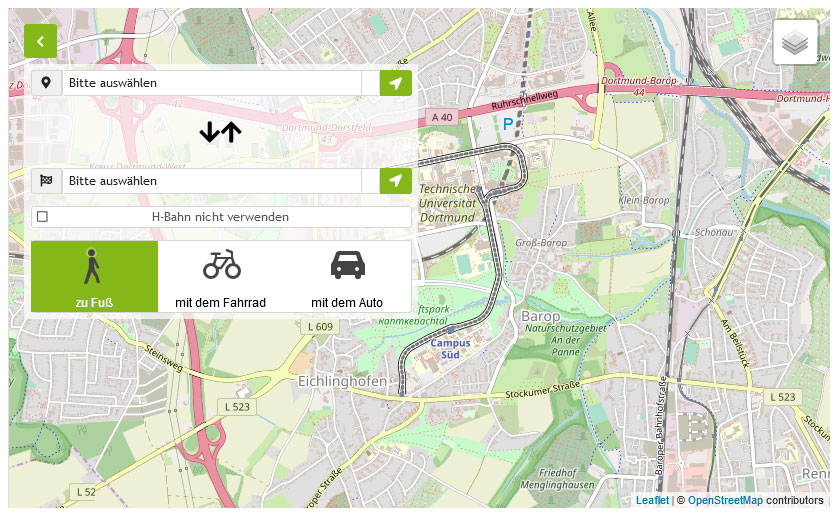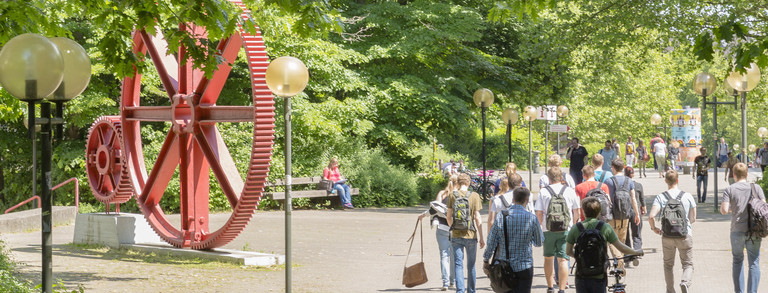Courses
- Fallstudien I
- Lecture: Statistics in Bioinformatics
- Advanced seminar for degree candidates
- Seminar: Clinical Prediction Models (F. Kappenberg)
- Advanced seminar for degree candidates
- Lecture: Statistics in Toxicology I - Modelling (F. Kappenberg)
- Lecture: Statistics in Toxicology II - Testing
- Lecture: Wahrscheinlichkeitsrechnung und mathematische Statistik für Informatiker
- Advanced seminar for degree candidates
SuSe 2023
- Lecture: Klinische Studien
- Lecture: Statistical Methods for Genetics - Bioinformatics
- Seminar: Multiples Testen in der Biostatistik (F. Kappenberg)
- Advanced seminar for degree candidates
WiSe 2022/23
- Lecture: Statistics in Toxicology II - Testing
- Introductory Case Studies
- Advanced seminar for degree candidates
SuSe 2022
- Lecture: Klinische Studien
- Lecture: Statistics in Toxicology I - Modelling (F. Kappenberg)
- Lecture: Empirische Analysemethoden - Datenanalyse für Raumplaner (A. Bommert)
- Advanced seminar for degree candidates
WiSe 2021/22
- Lecture: Statistics in Genetics - Bioinformatics
- Lecture: Statistics in Toxicology - Testing
- Advanced seminar for degree candidates
SuSe 2021
- Lecture: Klinische Studien
- Lecture: Statistics in Toxicology I - Modelling (F. Kappenberg)
- Introductory Case Studies
- Advanced seminar for degree candidates
WiSe 2020/21
- Fallstudien I
- Introductory Case Studies
- Advanced seminar for degree candidates
SuSe 2020
- Lecture: Klinische Studien
- Lecture: Datenanalyse mit SAS
- Seminar: Biostatistik
- Advanced seminar for degree candidates
WiSe 2019/20
- Lecture: Statistics in Toxicology
- Lecture: Wahrscheinlichkeitsrechnung und mathematische Statistik für Informatiker
- Advanced seminar for degree candidates
WiSe 2018/19
- Lecture: Statistische Methoden in der Genetik II (Bioinformatik)
- Seminar: Statistik in der Toxikologie
- Advanced seminar for degree candidates
SuSe 2018
- Lecture: Klinische Studien
- Lecture: Datenanalyse mit SAS
- Lecture: Statistik für Journalistinnen und Journalisten
- Advanced seminar for degree candidates
WiSe 2017/18
- Fallstudien I
- Lecture: Wahrscheinlichkeitsrechnung und mathematische Statistik für Informatiker
- Seminar: Bioinformatik
- Advanced seminar for degree candidates
SuSe 2017
- Lecture: Klinische Studien
- Lecture: Datenanalyse mit SAS
- Lecture: Statistik für Journalistinnen und Journalisten
- Advanced seminar for degree candidates
WiSe 2016/17
- Fallstudien I
- Lecture: Wahrscheinlichkeitsrechnung und mathematische Statistik für Informatiker
- Advanced seminar for degree candidates
SuSe 2016
- Lecture: Klinische Studien
- Lecture: Datenanalyse mit SAS
- Seminar: Biostatistik
- Seminar: Textmining
- Advanced seminar for degree candidates
WiSe 2015/16
- Lecture: Statistische Methoden in der Genetik II (Bioinformatik)
- Lecture: Wahrscheinlichkeitsrechnung und mathematische Statistik für Informatiker
- Advanced seminar for degree candidates
SuSe 2015
- Fallstudien I
- Fallstudien II (external)
- Advanced seminar for degree candidates
SuSe 2014
- Lecture: Klinische Studien
- Lecture: Datenanalyse mit SAS
- Seminar: Statistik in der Genetik
- Seminar: Modellwahl
- Advanced seminar for degree candidates
WiSe 2013/14
- Lecture: Statistische Methoden in der Genetik II (Bioinformatik)
- Lecture: Wahrscheinlichkeitsrechnung und mathematische Statistik für Informatiker
- Advanced seminar for degree candidates
SuSe 2013
- Lecture: Klinische Studien
- Lecture: Datenanalyse mit SAS
- Advanced seminar for degree candidates
WiSe 2012/13
- Lecture: Multivariate Verfahren
- Seminar: Angewandte Biostatistik mit R
- Advanced seminar for degree candidates
- Lecture: Genetische Netzwerke (M. Grzegorczyk)
SuSe 2012
- Lecture: Klinische Studien
- Lecture: Datenanalyse mit SAS
- Advanced seminar for degree candidates
WiSe 2011/12
- Fallstudien I
- Seminar: Klinische Studien
- Advanced seminar for degree candidates
SuSe 2011
- Lecture: Statistische Methoden in der Bioinformatik
- Lecture: Datenanalyse mit SAS
- Block course: Von der Survivalfunktion bis zu hochdimensionalen Daten
- Advanced seminar for degree candidates
WiSe 2010/11
- Lecture: Klinische Studien
- Lecture: Multivariate Verfahren
- Block course: Praktische Analyse von Microarray-Daten
- Advanced seminar for degree candidates
SuSe 2010
- Lecture: Genetische Netzwerke
- Block course: Überlebenszeitanalyse mit R und SAS
- Advanced seminar for degree candidates
WiSe 2009/10
- Lecture: Klinische Studien
- Seminar: Modellwahlkriterien
- Advanced seminar for degree candidates
SuSe 2009
- Lecture: Statistische Methoden in der Bioinformatik
- Lecture: Genetische Netzwerke
- Seminar: Bioinformatik
- Advanced seminar for degree candidates
WiSe 2008/09
- Lecture: Klinische Studien
- Lecture: Multivariate Verfahren
- Advanced seminar for degree candidates
SuSe 2008
- Lecture: Statistische Methoden in der Bioinformatik
- Seminar: Bioinformatik
- Fallstudien II
- Advanced seminar for degree candidates
WiSe 2007/08
- Lecture: Klinische Studien
- Advanced seminar for degree candidates
SuSe 2007
- Lecture: Statistische Lernverfahren
- Seminar: Überlebenszeitanalyse
- Advanced seminar for degree candidates


